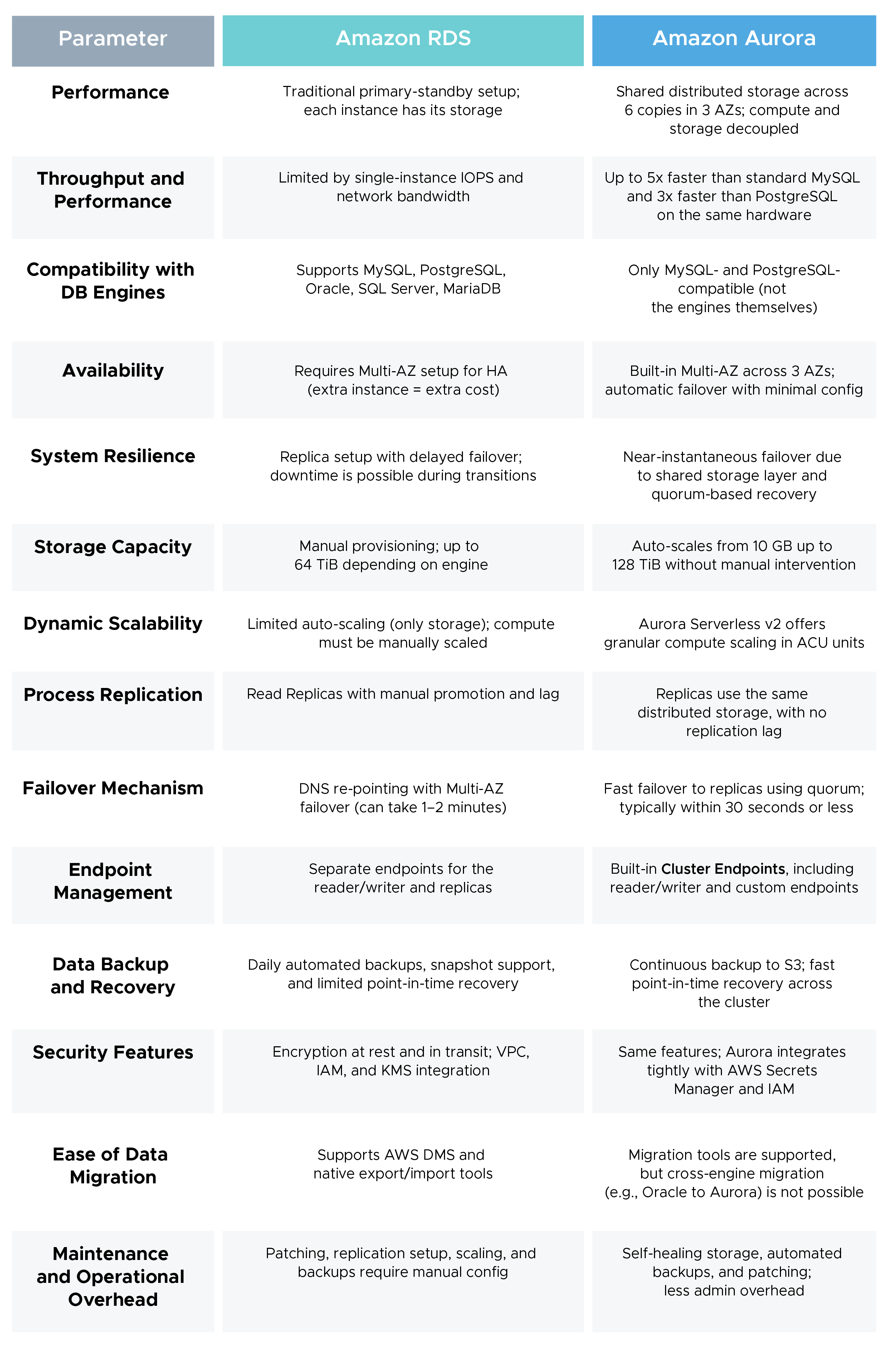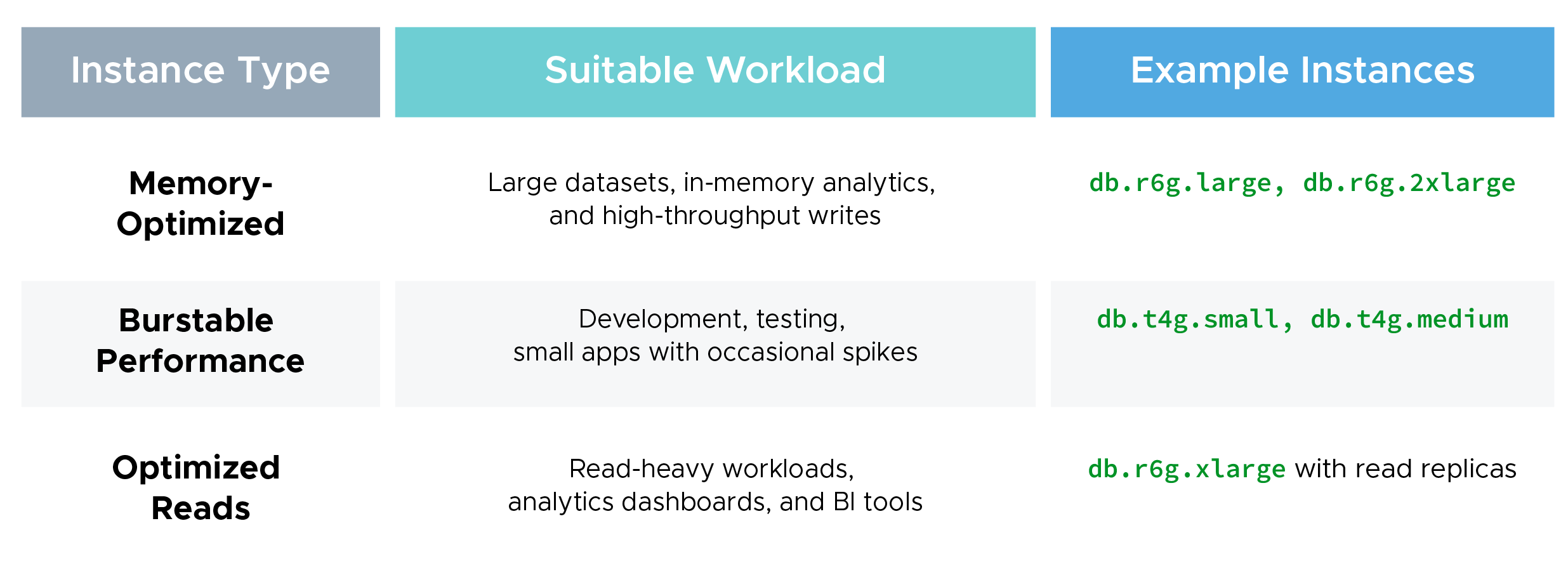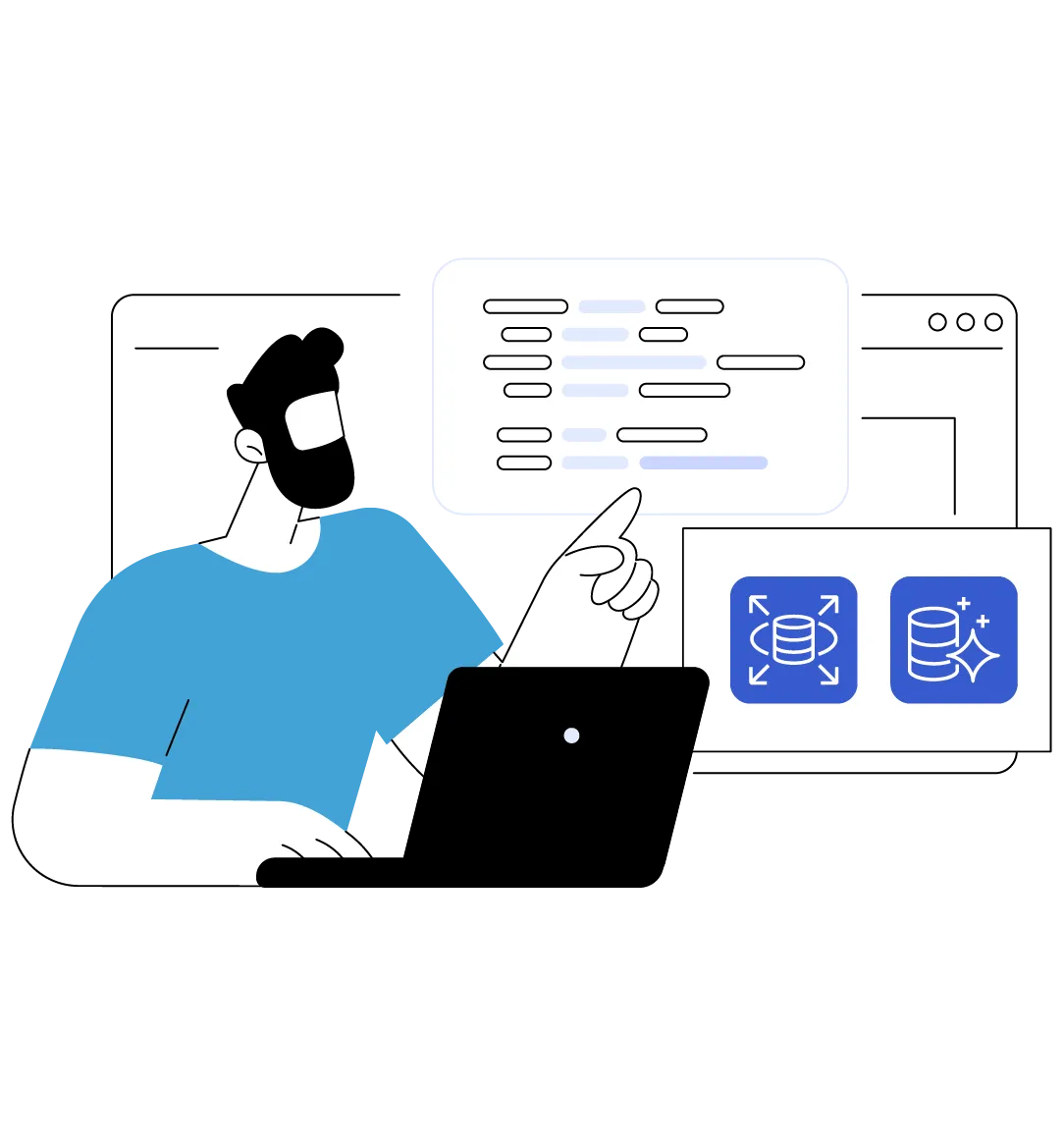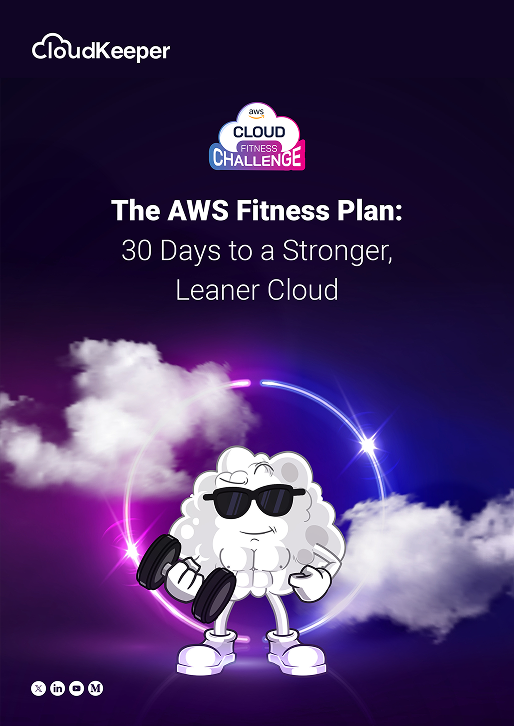Data is the single most crucial unit for the smooth functioning of any software-driven business, and how it’s handled defines the experience users have with your platform. For instance, customer data must be secured from unauthorized access, and databases should deliver fast I/O performance.
So, if you’re a business evaluating databases, it's essential to consider all factors — including cost — as storing and managing data can be expensive.
This blog explores two of the most popular AWS-managed databases that power millions of applications and store terabytes of data: Amazon RDS and Amazon Aurora. Keep in mind, there's no ‘Amazon RDS vs Aurora’ scenario; the right choice depends entirely on your specific workloads and requirements.
Understanding the Databases: Amazon RDS and Amazon Aurora
Both Amazon Aurora and Amazon RDS are AWS-managed databases, where AWS handles provisioning, patching, backups, recovery, and routine maintenance — either through automation or manual intervention. While they share fundamental similarities, they begin to diverge when it comes to specialization in use cases. As a result, they differ in pricing, performance, flexibility, storage capacity, and more.
Here’s a brief overview of the two most popular AWS-managed databases:
What is Amazon RDS?
Amazon RDS, short for Relational Database Service, simplifies the setup and management of complex relational databases by offloading administrative and maintenance responsibilities to AWS. It is a managed database service that supports multiple popular database engines. When RDS was launched back in October 2009, it initially supported only MySQL, but over the years, support has expanded to include SQL Server, Oracle Database, PostgreSQL, and MariaDB.
What are the benefits of using Amazon RDS?
- Cost-Effective Yet Secure Storage Option: Common DBA tasks like hardware provisioning, database setup, patching, and backups are automated, making database management easier. RDS also supports SSL/TLS-encrypted connections and offers Amazon Virtual Private Cloud (VPC) integration for enhanced security.
- Scalable Resources: Amazon RDS is one of those AWS-managed databases that allows for vertical scaling, both manually and automatically. For automatic scaling, predefined metrics and thresholds must be configured. Additionally, RDS supports read replicas, which improve read performance and help distribute workloads efficiently.
- Support for Multi-AZ Deployment: To ensure high availability and automatic failover, Amazon RDS supports Multi-AZ deployments across all supported database engines, offering built-in redundancy and fault tolerance.
- Integration with Amazon CloudWatch: By integrating with Amazon CloudWatch, administrators gain detailed visibility into performance metrics and the overall health of the system, enabling proactive monitoring and management.
What are the major drawbacks of Amazon RDS?
- Limited Flexibility: For workloads such as custom backup scripting or deep performance tuning, it is recommended to avoid using AWS RDS, as users do not have root access to the database servers. To compound the problem further, you cannot save on licensing costs since AWS forces you to buy licenses through the Marketplace.
- Single Point of System Failure: Out of all AWS managed databases, when RDS is deployed in a single AZ instance, the chance of SPOF — stretching to 30 minutes or in some cases longer— becomes significant. Thus, it is best practice always to use RDS in a Multi-AZ configuration.
- Limited Scalability: RDS nodes do not support horizontal scaling through sharding (only through read replicas) and also have limitations with read replicas (e.g., a maximum of 5 for MySQL); therefore, it is only suitable for non-complicated or low-performance workloads.
- Manual Networking and Security Responsibility: While AWS secures the infrastructure, users are responsible for the correct configuration of VPC, security groups, and database-level authentication and authorization.
What is Amazon Aurora?
Amazon Aurora is one of the database engines available under Amazon RDS. Think of it as a turbocharged version of MySQL and PostgreSQL — built by AWS to address the performance and scalability issues that traditional databases sometimes struggle with. It’s fully managed, but still feels familiar if you’ve worked with MySQL or Postgres before.
Advantages of using Amazon Aurora
- Faster than traditional RDS
Aurora can be up to 5x faster than standard MySQL and 3x faster than standard PostgreSQL — without you doing much. - Built for high availability
Your data is automatically replicated across multiple Availability Zones. Failovers typically occur within 30 seconds. - Storage grows with you
You don’t have to provision storage upfront. Aurora automatically scales from 10 GB to 128 TB as your data grows. - Managed by AWS
You don’t need to worry about backups, patching, or maintenance — Aurora handles all of that in the background. - Easy to switch to
Since it’s MySQL- and PostgreSQL-compatible, most apps can switch to Aurora without major code changes.
Drawbacks of using Amazon Aurora
- Expensive
It’s faster, yes — but also pricier. For small or dev workloads, the cost might not be worth it. - Tied to AWS
Aurora is AWS-specific. So, if you ever want to move off AWS, migrating out won’t be simple. - Not everywhere
Aurora isn’t available in every AWS region. It could be a problem if you need a specific location. - Less control
Since it’s fully managed, you can’t fine-tune everything like you could with a self-managed database. - Migration isn't always smooth
Even though it's “compatible,” heavily customized or large databases may still hit snags during migration.
The Dilemma Organizations Face When Choosing Between Amazon RDS and Amazon Aurora
When teams weigh Amazon RDS vs Aurora, the decision often comes down to balancing performance with cost. RDS offers dependable, fully managed support for multiple database engines, making it a solid choice for typical workloads where simplicity and cost control matter.
Aurora steps in when high-performance, low-latency reads and built-in high availability are critical. With its distributed storage and faster failover, it's built for more demanding applications, but with a higher price tag and a deeper tie-in to AWS infrastructure.
Amazon RDS vs Amazon Aurora: A Holistic Comparison

Amazon RDS vs Amazon Aurora Cost Comparison
When comparing AWS databases with all parameters kept static, Amazon Aurora proves to be more expensive than Amazon RDS. For example, if you're running a service that requires an upper threshold of compute and memory, say, using a db.r6g.4xlarge instance — it might cost around $1.24/hour on Amazon RDS (for PostgreSQL). In contrast, the same configuration on Amazon Aurora PostgreSQL-Compatible Edition could cost about $1.52/hour, not including additional charges for I/O and storage that Aurora bills separately.
However, considering the somewhat limited performance capabilities of RDS, it becomes important to use Aurora for intense workloads. If your application demands extra power and experiences an outage or performance degradation, the resulting downtime could cost much more than the savings you made by choosing RDS over Aurora.
Thus, there is no direct Amazon RDS vs Aurora comparison per se, but each has its use case.

Ideal Use Case for Amazon Aurora
Where low latency and resilience against traffic spikes are paramount, Amazon Aurora becomes the go-to database out of all AWS-managed databases, especially for applications like SaaS platforms and e-commerce websites that handle hundreds of thousands of read-write operations simultaneously. Its ability to autoscale storage, replicate across multiple Availability Zones, and recover quickly from failovers makes it ideal for mission-critical systems that can’t afford lag or downtime.
Example scenario:
During a Black Friday sale, an e-commerce app running on Amazon RDS MySQL hits IOPS limits and suffers degraded performance.
With Amazon Aurora, read replicas handle traffic spikes, and failover to a standby happens in under 30 seconds.
Aurora’s autoscaling storage and multi-AZ replication keep the application responsive and resilient.
Ideal Use Case for Amazon RDS
While Amazon RDS can support e-commerce websites and SaaS platforms, it’s generally not the best fit for workloads that need high throughput or elastic scaling. RDS has its limits, especially when it comes to performance spikes and automatic scalability.
It works best for applications with steady, predictable usage — things like long-running internal tools, backend systems, or budget-sensitive apps running on t3.micro or similar instances. The key here is moderate performance, predictable workload, and a strong focus on cost control over peak resilience.
Example scenario:
A startup runs an internal customer support ticketing system with a stable, low-variance workload throughout the day.
Deploying it on Amazon RDS PostgreSQL with a t3.medium instance and gp2 storage is sufficient to meet performance needs at minimal cost.
Running the same on Amazon Aurora PostgreSQL would inflate costs due to per-I/O billing and reserved replica overhead, without any tangible performance gains for this use case.
Best Practices for Amazon RDS Cost Optimization
It requires a deliberate strategy across storage, compute, backups, and monitoring — all aligned to workload patterns.
While RDS offers built-in automation, cost overruns still happen when configurations aren’t fine-tuned. Whether you’re running production-grade databases or dev/test environments, following structured best practices can significantly reduce your RDS bill without affecting performance.
- Right-Size Your Instances: Regularly analyze CPU, memory, and disk I/O metrics using CloudWatch to downsize oversized DB instances. Don’t pay for unused capacity.
- Use Reserved Instances or Savings Plans : For steady workloads, switch from On-Demand to Reserved Instances (1- or 3-year term) to save up to 72%.
- Enable Storage Auto-Scaling — but Monitor It : Let RDS auto-scale storage to avoid performance bottlenecks, but set alerts to avoid silent cost creep.
- Switch to Burstable Instances (T-Series) for Dev/Test: For non-production workloads, db.t3 or db.t4g instances are cost-effective with baseline performance and CPU credits.
- Use General Purpose (gp3) Storage : gp3 is cheaper than gp2 and allows independent tuning of IOPS and throughput — ideal for most workloads.
- Turn On Multi-AZ Only Where Needed: Multi-AZ doubles compute cost. Use it only for production or high-availability workloads — not dev or staging. Learn more about multi-AZ cost optimization here.
- Leverage Read Replicas Strategically: Offload read-heavy traffic to cheaper replica instances. For low-volume reads, avoid unnecessary replicas.
- Delete Unused Snapshots and Idle Instances: Snapshots beyond retention and idle databases sitting in dev environments add a silent recurring cost — clean them up regularly.
- Tune Connection Pooling and Query Efficiency: Inefficient queries and long-lived connections increase resource use. Use RDS Performance Insights and connection pooling (e.g., PgBouncer for PostgreSQL).
- Consolidate Underutilized Databases: Multiple underused RDS instances can often be merged into a single instance or clustered environment to reduce overhead.
Best Practices for Amazon Aurora Cost Optimization
Amazon Aurora delivers unmatched performance, but without smart optimization, costs can spiral fast. Here’s how to maximize efficiency without sacrificing speed or reliability.
1) Use Commitment-Based Discount Programs
The AWS RI and AWS Savings Plan discount programs are not exclusive to EC2 but also apply to AWS Aurora — both Standard and I/O-Optimized configurations.
RI programs offer up to 72% discounts on On-Demand pricing for select configurations, such as geographic regions, instance classes, and commitment terms.
2) Implement Rules for Storage Scalability
The hallmark feature of Amazon Aurora is that it scales automatically according to the workload. However, engineers often fail to put in place scaling-limiting mechanisms (e.g., CloudWatch alarms or AWS Budgets) and notifications, which, as a result, can lead to cost overruns.
3) Clear Out Old Data
To prevent storage from scaling exponentially, enable data compression and regularly clear out old logs.
Many old and unused data points, such as dropped tables, partitions, databases, logs, and snapshots, can accumulate significant gigabytes of storage over time. Thus, it is important to clear out data, or if it needs to be retained, move such static data to S3 buckets.
Top 5 Data Points to Clear
- Old Database Snapshots
Manual or outdated automated snapshots retained beyond required retention periods can silently consume hundreds of GBs. - Expired Table Partitions
Time-series or partitioned tables often accumulate old partitions that no longer serve business or reporting needs. - Audit Logs and General Logs
Continuous logging (e.g., with aurora_enable_audit_log) without rotation leads to large volumes of uncompressed logs. - Orphaned Temporary Tables
Leftover temp tables from aborted sessions or long-running queries can persist and consume space if not properly cleaned up. - Dropped Tables and Unused Schemas
Even dropped tables can leave traces in snapshots or backups; unused schemas should also be cleaned to avoid storage waste.
4) Enhance Cloud Cost Visibility
Cloud cost visibility is key to cost optimization of your Aurora DB cluster. AWS Management Console, AWS CLI, CloudWatch API, and CloudKeeper Lens are some of the tools you can use to gain insights into the DB.
Note: In your DB instance, for the tools to access the cluster’s performance, Performance Insights must be turned on.
Select the Instance Category That Aligns With Your Workload
Instances under AWS Aurora can be categorized into two broad categories: Provisioned and Serverless v2.
Provisioned Instances offered by AWS Aurora are as follows:
Serverless Instances v2 offered under AWS Aurora are as follows:

Also, within the same Aurora cluster, it is possible to use Serverless v2 instances alongside Provisioned instances.
Burstable Instances: If you’re still unsure about your workload and want to gauge it in a development and testing environment, burstable instances can be a good choice.
(Feature of Burstable Instance: They come with CPU credits, allowing short bursts of performance above baseline at no additional hourly charge.)
5) Utilize Aurora Read Replicas
Read Replicas help in optimizing read operations by shifting resource-intensive read queries to other instances, thus reducing the load on the primary instance and trimming overall costs.
Aurora Global Databases, while an add-on over the standard instance, offer reduced latency, which can help offset the additional cost in globally distributed applications.
6) Optimize I/O Costs
Each read and write operation on AWS Aurora incurs charges; thus, all database interactions need to be optimized.
Here’s how you can optimize your I/O:
a) Schema and Query Optimization
- Normalize to reduce redundancy, denormalize where needed to cut JOIN overhead.
- Use minimal data types to save space and I/O.
- Index only on frequently queried columns (WHERE, JOIN, ORDER BY).
- Avoid SELECT *, use EXPLAIN to tune queries.
b) Batch and Bulk Operations
- Batch INSERT/UPDATE/DELETE in single transactions.
- Use LOAD DATA for bulk imports instead of row-by-row inserts.
c) Caching and Read Replicas
- Use ElastiCache (Redis/Memcached) to offload frequent reads.
- Shift read-heavy traffic to Aurora read replicas.
d) Connection and Transaction Management
- Keep connections and transactions short-lived.
- Commit quickly to reduce locks and disk writes.
e) Monitoring and Tuning
- Monitor IOPS and latency with CloudWatch and Performance Insights.
- Tune buffer pool and cache size to push more ops in-memory.
f) Application-Level Optimization
- Reduce write frequency — aggregate data before DB hits.
- Use idempotency to avoid redundant writes.
g) Data Lifecycle and Archiving
- Archive cold data to S3; keep the active dataset lean.
- Purge stale records regularly.
h) Aurora-Specific Features
- Use Aurora Serverless v2 for spiky workloads with auto-scaling.
- Use Aurora Global Database to route reads locally, cut cross-region latency, and I/O.
While setting up your Aurora Cluster, it is essential to ensure that cost optimization practices don’t impede availability. If they do, the savings benefit would be offset by the business loss resulting from downtime.
Our blog on ensuring high availability of Aurora clusters will help you better understand this balance.
Major Industry Applications of These Two Databases
When it comes to Amazon RDS vs Aurora, it’s not a matter of one replacing the other. Both databases serve very different purposes, based on how demanding the workload is in terms of performance, scalability, and availability. It’s common for organizations to run both RDS and Aurora together in the same environment, depending on what each workload needs.
Amazon RDS in the Industry
Amazon RDS runs stable, business-critical workloads across industries like banking, fintech, and gaming, where the focus is on reliability, compliance, and predictable performance.
Airbnb: Airbnb moved from a self-managed MySQL setup to Amazon RDS for MySQL with Multi-AZ deployment on db.m5.large instances. The switch simplified scaling and replication using just an API call or AWS Console, compared to the manual setup earlier.
They rely on Multi-AZ to keep things highly available and durable without manual failover handling.
Amazon Aurora in the Industry
Aurora is built for scale. When you need low latency, high throughput, and the ability to handle unpredictable or spiky workloads, Aurora delivers — especially for real-time, global systems.
DoorDash: Runs a single Aurora MySQL-Compatible cluster on db.r6g.8xlarge instances to manage over 800,000 daily deliveries. That’s almost 10 TB of active data, handled with Aurora’s distributed storage and consistent performance, even under heavy traffic.
The Pokémon Company: Migrated the Pokémon Trainer Club system from standard PostgreSQL to Aurora PostgreSQL-Compatible using db.r6g.large instances. The result: downtime dropped from 168 hours to under 1 hour over six months, thanks to Aurora’s fast failovers and built-in automation.
Best Western Hotels: Uses Aurora with db.r6g.4xlarge and higher to run its reservation system, processing 2.3 billion availability messages in just 60 seconds. Read replicas are used to handle query loads and keep things responsive even at massive scale.
Conclusion
Ultimately, the decision hinges on your workload requirements. RDS offers stability and ease of use, while Aurora provides unmatched power for demanding environments. Assess your needs carefully—choosing the right database can mean the difference between smooth operations and costly inefficiencies.
Frequently Asked Questions (FAQs)
Q1.What are the features unique to Amazon RDS?
Amazon RDS offers multi-engine support (MySQL, PostgreSQL, etc.), simpler setup, and predictable pricing, making it ideal for traditional workloads. Unlike Aurora, it lacks auto-scaling storage and global database clusters. For AWS-managed databases, RDS balances ease and cost in the AWS database comparison.
Q2.What are the features unique to Amazon Aurora?
Amazon Aurora provides 5x MySQL/PostgreSQL performance, auto-scaling storage, and low-latency global replication. Its serverless option and faster failovers outperform RDS in the RDS vs Aurora cost comparison for high-scale apps.
Q3.Can I use Amazon RDS and Amazon Aurora together?
Yes! Many enterprises run both RDS and Aurora—using RDS for legacy apps and Aurora for high-performance needs. This hybrid approach optimizes AWS-managed databases' costs and performance in Amazon RDS vs Aurora setups.
Q4.What are the advantages & disadvantages of Amazon Aurora?
Pros: Faster, auto-scaling, global-ready.
Cons: Higher costs if not optimized, vendor lock-in. In the AWS database comparison, Aurora wins for scale but may be overkill for simple workloads.
Q5.What are the advantages & disadvantages of Amazon RDS?
Pros: Cost-effective, easy to manage, broad engine support.
Cons: Limited scalability, slower replication. For a cost comparison between RDS and Aurora, RDS is better suited for budget-conscious, low-traffic use cases.

